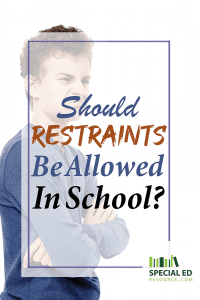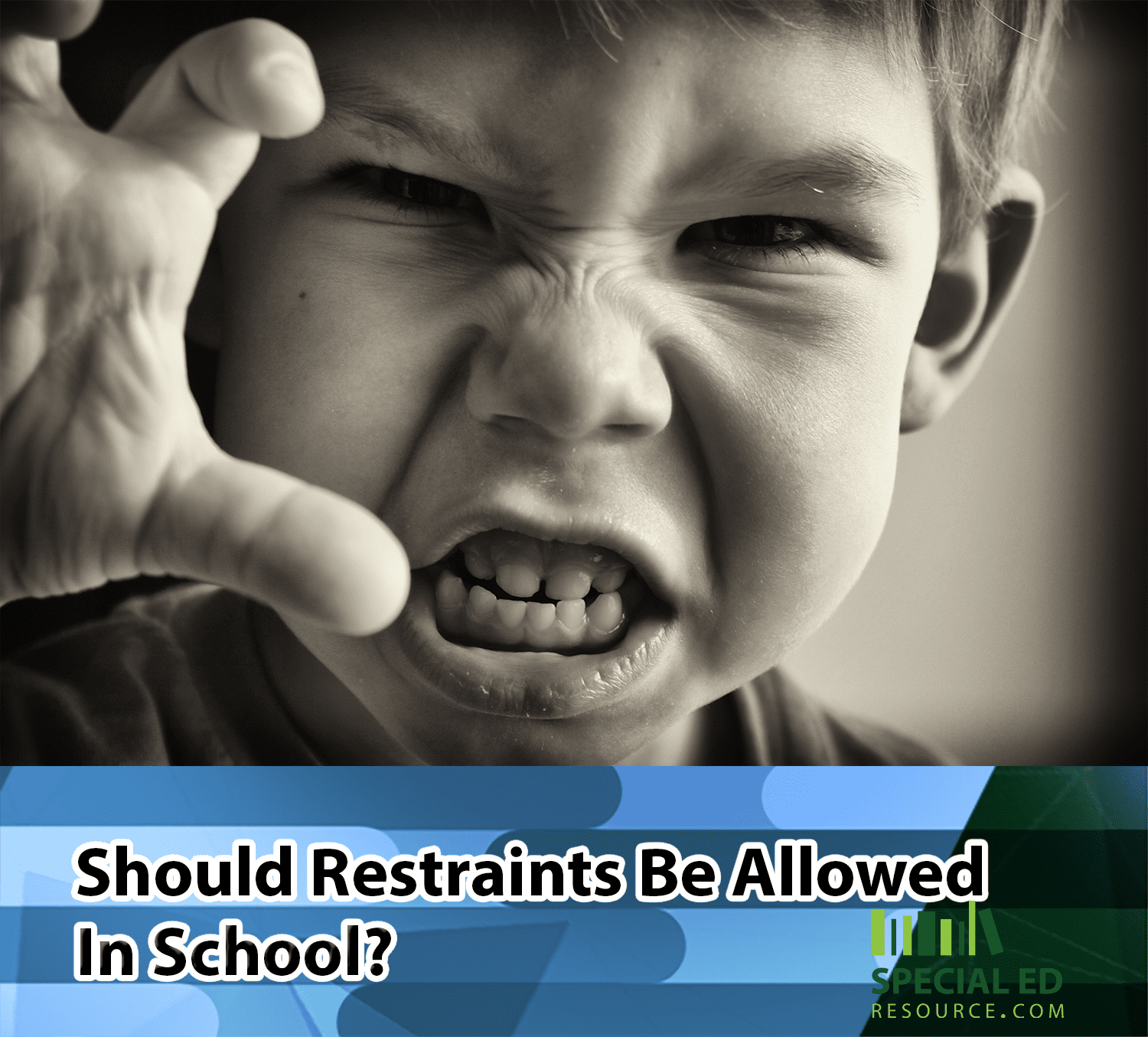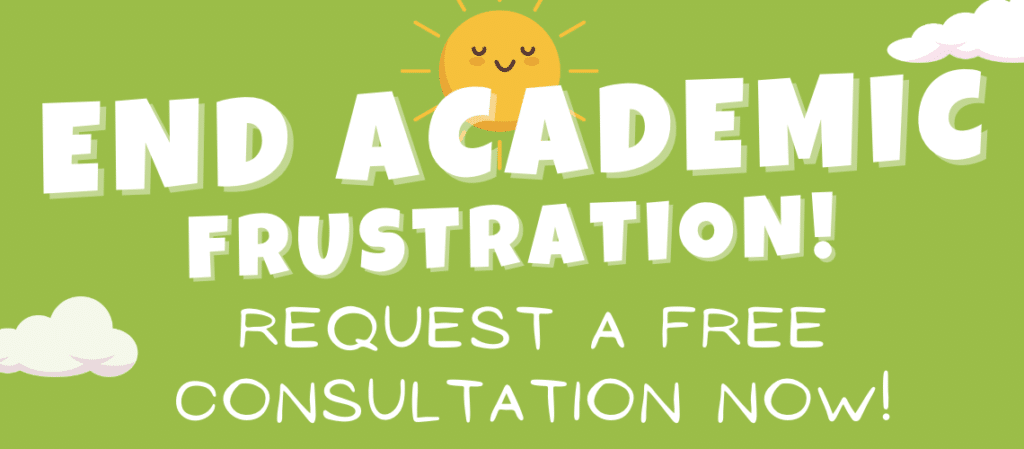“It took almost two hours for him to finally calm down…”
Shocked by how long it took, I asked if he just sat in a corner and cried…
“No, it took two behavior coaches restraining him for that amount of time…”
This was the conversation my wife and I had about one of her students roughly 15 years ago.
You see… he had just thrown his desk halfway across the room and was in the middle of a violent meltdown.
He’d threatened, cursed, and had been physically aggressive toward my wife (the teacher), and other students in the class…
These instances happened a lot at her school…
Reasoning, talking, choices… didn’t seem to work.
This was the first time I had heard about restraints and how they were used in the school system…
A few years later… reports of children getting hurt around the country while being restrained started to surface.
One of our Special Education Experts, Carolyn, wrote an article with some current updates on the way schools handle behaviors.
A new study found that rules remain to differ considerably throughout states in regards to the appropriate use of restraints.
This comes almost ten years after Congress was introduced with the idea of limitations being implemented on the use of seclusion and also restraints in schools.
According to this study, 30 states have significant known laws which limit the use of restraints and seclusion amongst all children in schools. Thirty-nine states have another type of restriction purposefully put into place for children with disabilities.
The Use Of Restraints In School
There has been a multitude of reports that have brought to light hundreds of situations of abusive and even deadly uses of restraints and seclusion.
As a result, the U.S. House of Representatives approved legislation in 2010 which executed national standards on seclusion and restraint in schools. Even though the House of Representatives wanted to implement this standard, the Senate has failed to pass the bill. Therefore, federal efforts have been put on pause ever since.
Some states have nearly no protection put into place when it comes to implementing the use of restraints and seclusion in their schools. These states include;
- Nebraska
- Missouri
- Oklahoma
- North Dakota
- Idaho
At a federal level, Democrats have presented a bill later in the year a short time before winning the majority of the vote in the House very similar to the legislation which was approved in 2010.
Democrats mentioned plans to reintroduce and highlight the use of seclusion and restraints in legislation this year, however, at this time, that has not happened and congressional sources have remained quiet on the status.
According to the most current figures provided by the Department of Education, 122,000, students nationwide were victims of restraint or seclusion throughout the school year of 2015-2016.
Students with disabilities reflected seventy-one percent of restraint and sixty-six percent of seclusion incidents…
However, in a study that came out this past summer (2019), the (GAO) Government Accountability Office discovered that the Education Department’s statistics are imperfect and incorrect, and included many school districts which erroneously reported zero incidents.
The Department of Education has assumed a comprehensive plan to better data collection on seclusion and restraint and further enhance correct methods of meeting the behavioral requirements of students with disabilities.
On July 31, 2009, Secretary Duncan mailed a letter to the territories and states which urged them to create or evaluate and edit their policies and procedures of seclusion and restraints in order to guarantee that all students in every school under its authority is protected from being needlessly or improperly secluded or restrained.
He also encouraged them to broadcast these policies and procedures so that teachers, administrators, and parents can comprehend and agree to the limited situations with which these methods are permitted to be used.
Duncan also made it crucial that that parents be alerted when these interventions take place and offer the resources required in order to effectively execute the policies and have school districts, teachers, and administrators be held accountable for following these guidelines.
What are your thoughts on restraints in school?
Leave a comment below… we’d LOVE your feedback!
~Carolyn














2 Comments
I have worked in an alternative school that safely used restraints. Restraints are necessary when a student is out of control and at risk of causing harm to others, to self, or to school property. Restraints, done properly, assist the student in getting control of themselves when they are incapable of doing so by themselves. Many students thanked us for restraining them and helping them to get their emotions under control. During the restraint, the staff are talking to the student to de-escalate.
I agree as a Special Ed teacher with early childhood students. They aren’t able to communicate in speech to us, but when they calm down they often give us a hug or some other type of affection. It has to be done properly – not in anger or as a punishment. Other students must be a consideration as well – they become afraid of the student who hurts them over and over, or they begin to become violent themselves and retaliate. We have to help these students learn to control their behaviors, but meanwhile, we must have a way to quickly and effectively keep them from harming themselves and other students, especially. It often means we are required to risk our own personal safety to do it, but that is the nature of the situation. AI